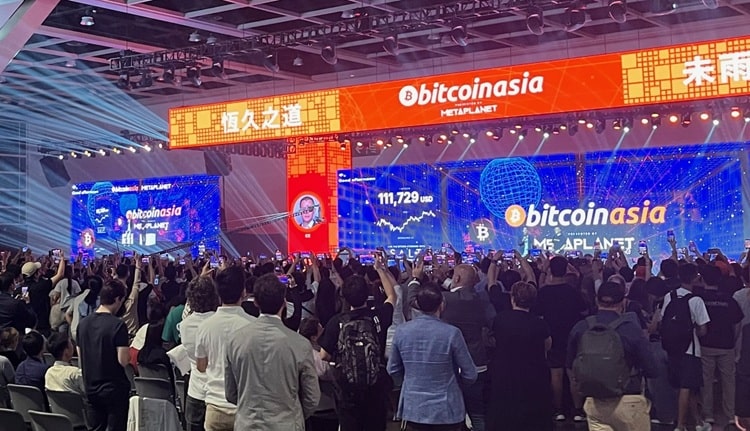HONG KONG, September 1, 2025 – The second edition of Bitcoin Asia drew record-breaking crowds to Hong Kong on August 28–29, marking the city’s ambition to position itself as a leading hub for digital assets. With over 17,000 ticket registrations and around 15,000 attendees on-site, the event is now the second-largest Bitcoin-focused gathering worldwide, underscoring Asia’s rising influence in the global crypto landscape.
Having attended the conference in person, I witnessed the sheer scale of engagement — from packed keynote halls to animated side discussions on policy, treasury management, and the next wave of institutional adoption. The energy in the venue reflected both optimism and tension, with industry leaders balancing bold visions against the realities of regulation and compliance.
High-Profile Appearances and Political Ripples
The star attraction was Eric Trump, son of U.S. President Donald Trump, who declared Bitcoin the “greatest asset in the world” and predicted it would “hit a million dollars.” His remarks drew thunderous applause from the crypto-faithful, many of whom see the Trump administration as crypto’s strongest political ally in Washington.
Yet Trump’s presence also caused ripples locally. Senior Hong Kong figures — including Eric Yip Chee-hang of the Securities and Futures Commission (SFC) and lawmaker Johnny Ng Kit-ch — withdrew from the programme, reportedly advised not to appear alongside Trump due to geopolitical sensitivities. The withdrawals only reinforced the delicate intersection of politics and digital assets that continues to shape the industry.
Adding to the heavyweight line-up, Changpeng Zhao (CZ), founder and former CEO of Binance, argued that Bitcoin could one day serve as the “global reserve currency.” His assertion sparked debate across social media, with advocates praising Bitcoin’s scarcity and decentralisation while critics pointed to volatility and regulatory barriers.
Beyond Token Storage: Rethinking Corporate Treasuries
A recurring theme throughout the conference was how corporates should manage their crypto treasuries. Abel Seow, APAC head and managing director at BitGo, urged firms to move beyond “token accumulation” toward building ecosystems that integrate digital assets into sustainable financial structures.
“The next stage isn’t just about holding tokens. It’s about building environments where digital assets contribute to growth, liquidity, and stability,” Seow emphasised.
His remarks resonated strongly with institutional investors present, many of whom are keen to see crypto evolve into a more mature asset class with clear governance models.
Hong Kong’s Push for Regulatory Leadership
Regulation was front and centre. Clarence Shen, fintech policy manager at the SFC, underlined Hong Kong’s determination to be not just a participant but a rule-maker in the digital asset space.
“Hong Kong has the opportunity to be a writer of the global digital asset rulebook,” Shen said, stressing the city’s active participation in bilateral and multilateral regulatory dialogues.
The conversations took place against the backdrop of Hong Kong’s newly introduced stablecoin law, passed in May 2025. The law mandates licensing by the Hong Kong Monetary Authority (HKMA) for Hong Kong dollar-backed stablecoins and imposes strict rules on reserves and redemption rights. While the framework is seen as investor-friendly, companies have voiced concerns over compliance costs and barriers to early growth.
Asia’s Growing Weight in the Crypto Economy
From the main stage to the exhibition floor, what stood out most was Asia’s increasing weight in global crypto. With Western markets facing tighter rules, Asia is fast becoming the arena where new models of adoption and regulation are tested.
The record turnout at Bitcoin Asia was itself testament to this momentum. The buzz in Hong Kong last week was clear: Asia is no longer a passive adopter of crypto trends — it is actively shaping the next phase of digital finance.
As I left the venue on the closing evening, the conversations continued in cafes and rooftop bars across Central. The sense was unmistakable: Bitcoin Asia 2025 was not just another crypto conference; it was a marker of where the industry is headed — towards deeper integration with financial systems, more rigorous oversight, and a truly global contest for leadership in digital assets.

